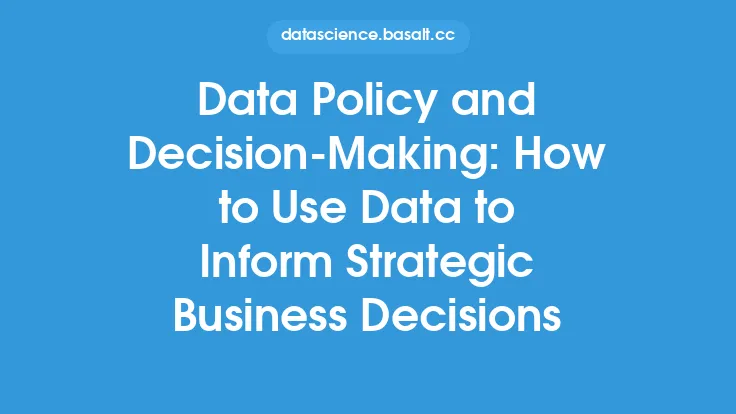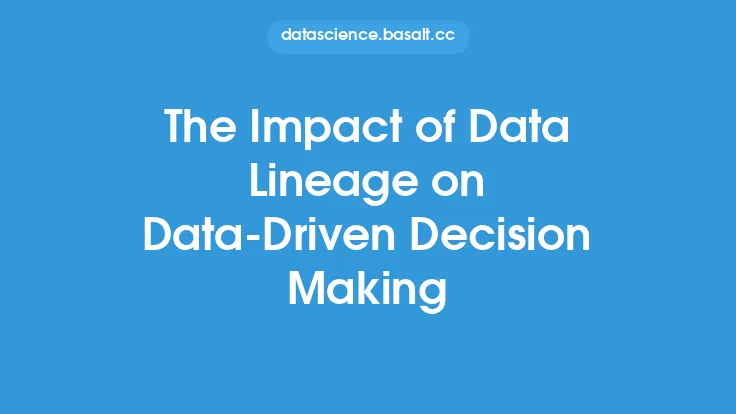Data normalization is a crucial step in the data preprocessing pipeline, playing a vital role in enhancing data quality and reliability in data-driven decision making. The process involves transforming raw data into a standardized format, ensuring that all data points are on the same scale, which is essential for accurate analysis and modeling. In this article, we will delve into the world of data normalization, exploring its significance, benefits, and techniques, as well as its impact on data quality and reliability.
Introduction to Data Normalization
Data normalization is a technique used to rescale numeric data to a common range, usually between 0 and 1, to prevent features with large ranges from dominating the model. This process helps to reduce the effect of scale differences between variables, allowing models to treat all features equally. Normalization is essential in various data-driven applications, including machine learning, data mining, and statistical analysis. By normalizing data, organizations can ensure that their data is consistent, reliable, and accurate, which is critical for making informed decisions.
Benefits of Data Normalization
The benefits of data normalization are numerous and significant. Some of the most notable advantages include:
- Improved model performance: Normalization helps to reduce the impact of scale differences between variables, allowing models to treat all features equally and improving overall performance.
- Enhanced data quality: Normalization helps to identify and correct errors, inconsistencies, and outliers in the data, resulting in higher quality data.
- Increased reliability: Normalized data is more reliable, as it reduces the risk of errors and inconsistencies that can arise from scale differences.
- Better data integration: Normalization enables the integration of data from different sources, allowing organizations to combine data from various systems and applications.
- Improved data analysis: Normalization facilitates more accurate and meaningful analysis, as it allows for the comparison of data from different sources and variables.
Data Normalization Techniques
There are several data normalization techniques, each with its strengths and weaknesses. Some of the most common techniques include:
- Min-Max Scaling: This technique rescales data to a common range, usually between 0 and 1, using the minimum and maximum values.
- Z-Score Normalization: This technique rescales data to have a mean of 0 and a standard deviation of 1, using the z-score formula.
- Log Scaling: This technique rescales data using the logarithmic function, which is useful for data with a large range of values.
- L1 and L2 Normalization: These techniques rescale data to have a length of 1, using the L1 or L2 norm.
Impact of Data Normalization on Data Quality
Data normalization has a significant impact on data quality, as it helps to identify and correct errors, inconsistencies, and outliers in the data. Normalization also helps to reduce the risk of data skewness, which can arise from scale differences between variables. By normalizing data, organizations can ensure that their data is consistent, reliable, and accurate, which is critical for making informed decisions. Additionally, normalization enables the integration of data from different sources, allowing organizations to combine data from various systems and applications.
Data Normalization and Reliability
Data normalization is essential for ensuring the reliability of data-driven decision making. By normalizing data, organizations can reduce the risk of errors and inconsistencies that can arise from scale differences between variables. Normalization also helps to improve the accuracy and meaningfulness of analysis, allowing organizations to make more informed decisions. Furthermore, normalization enables the identification of outliers and anomalies in the data, which can be critical in detecting errors or inconsistencies.
Best Practices for Data Normalization
To ensure effective data normalization, organizations should follow best practices, including:
- Understanding the data: Before normalizing data, it is essential to understand the distribution, range, and characteristics of the data.
- Choosing the right technique: The choice of normalization technique depends on the type of data, the range of values, and the desired outcome.
- Handling missing values: Organizations should have a strategy for handling missing values, such as imputation or interpolation.
- Monitoring and maintenance: Normalization is an ongoing process, and organizations should regularly monitor and maintain their normalized data to ensure its quality and reliability.
Conclusion
Data normalization is a critical step in the data preprocessing pipeline, playing a vital role in enhancing data quality and reliability in data-driven decision making. By understanding the significance, benefits, and techniques of data normalization, organizations can ensure that their data is consistent, reliable, and accurate, which is critical for making informed decisions. As data continues to grow in volume, variety, and velocity, the importance of data normalization will only continue to increase, making it an essential skill for data professionals and organizations alike.





